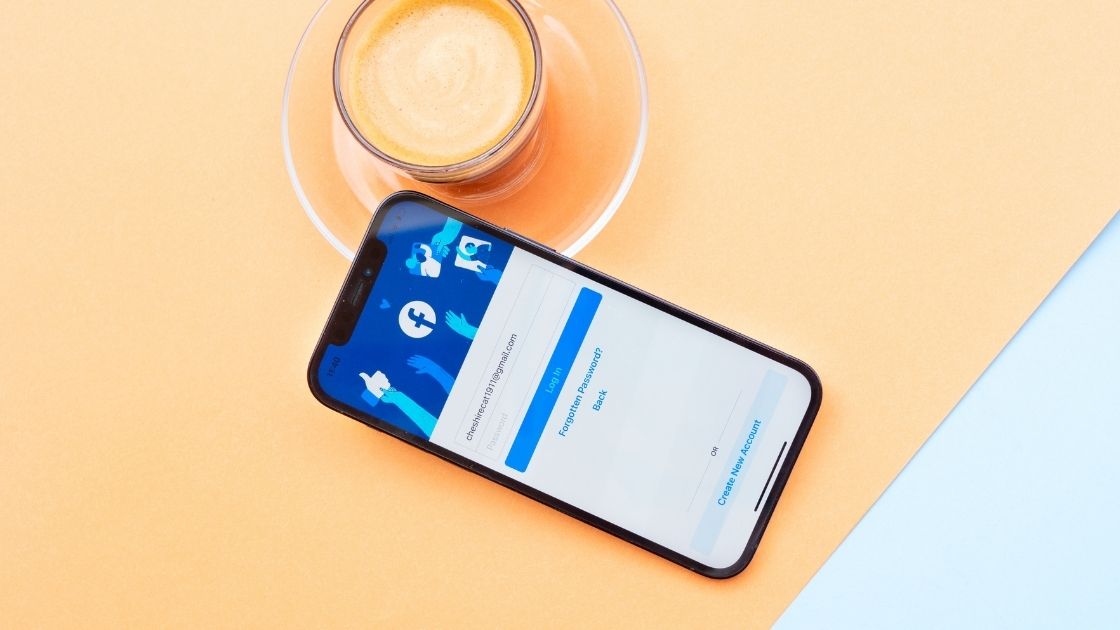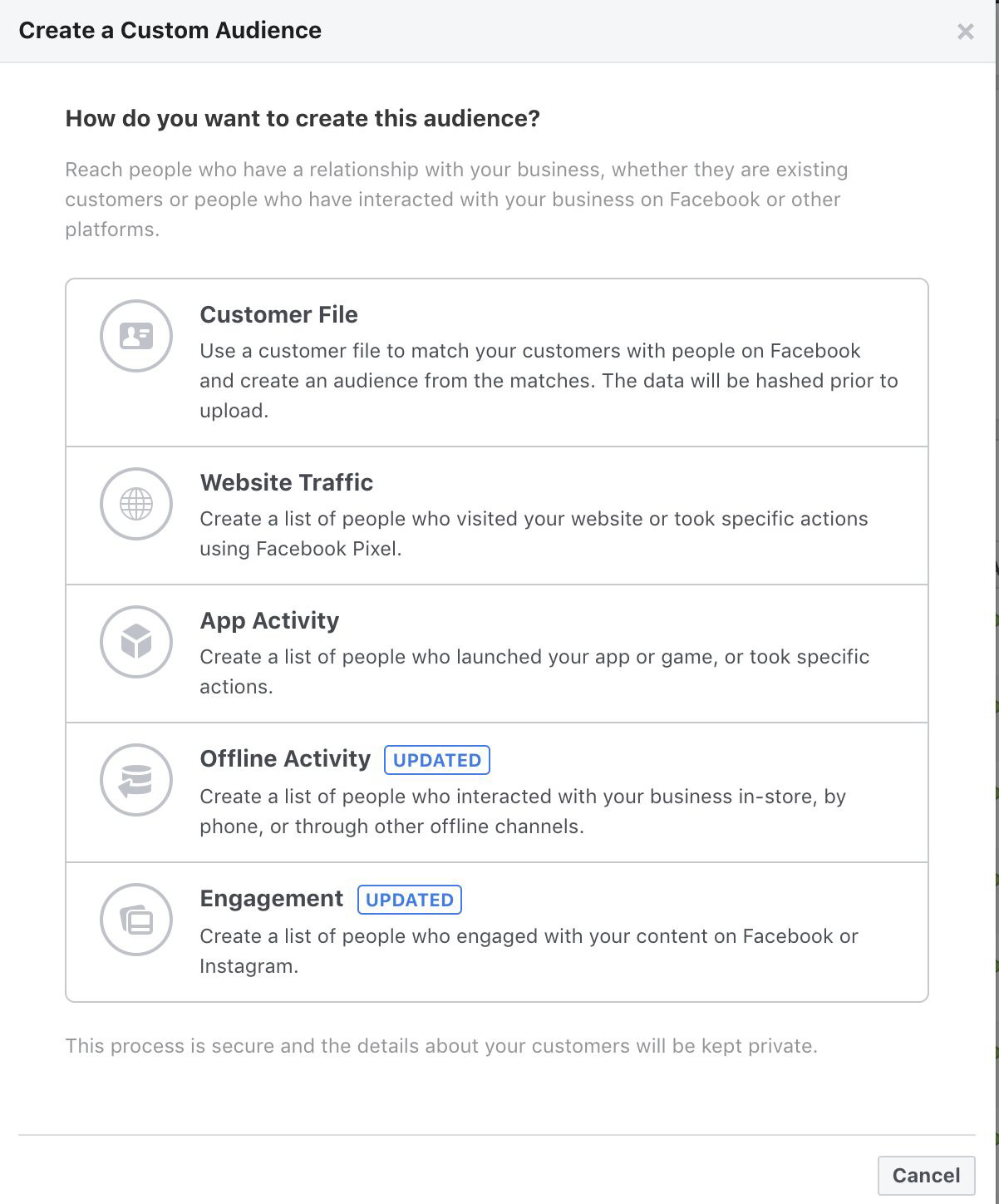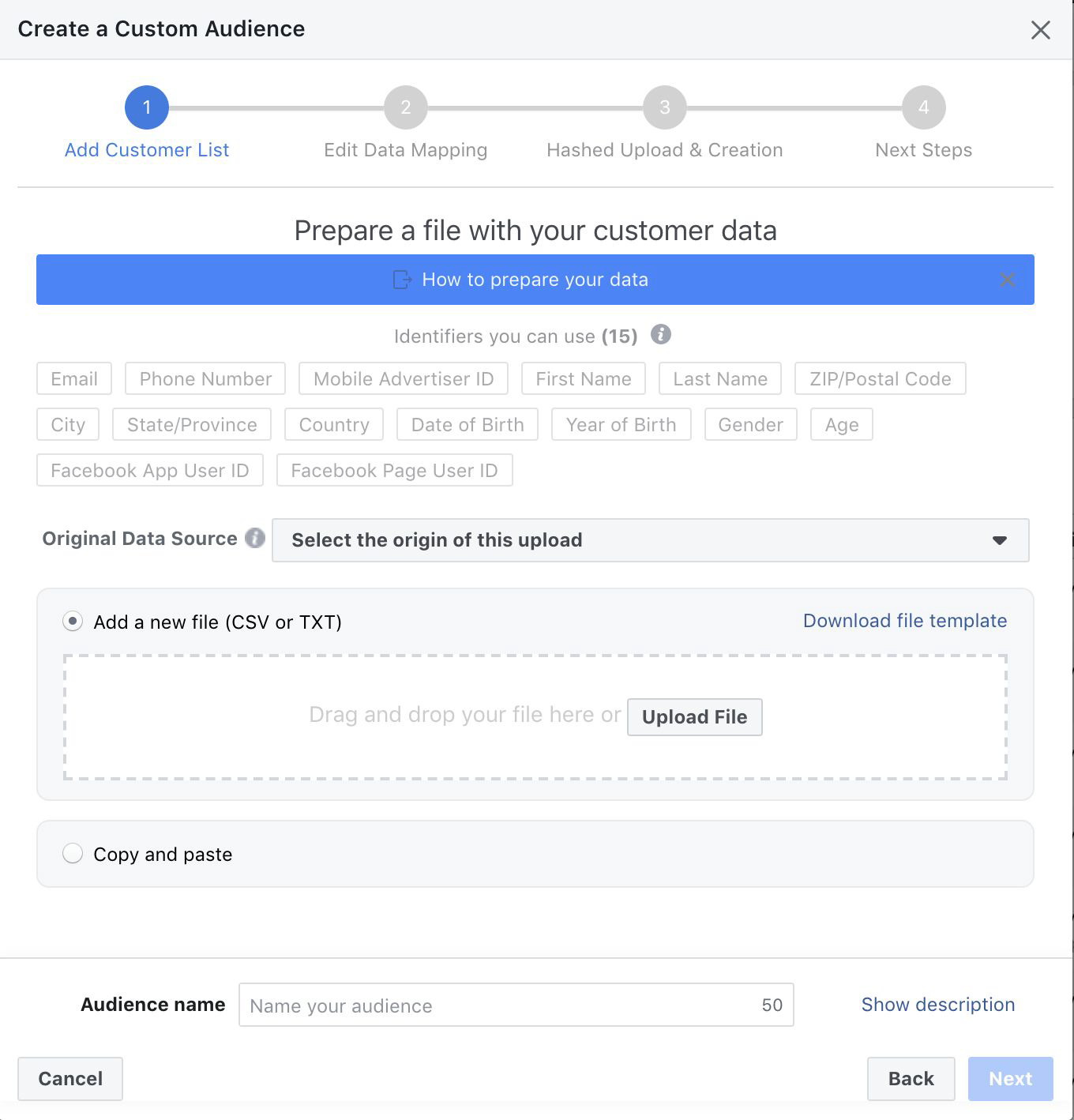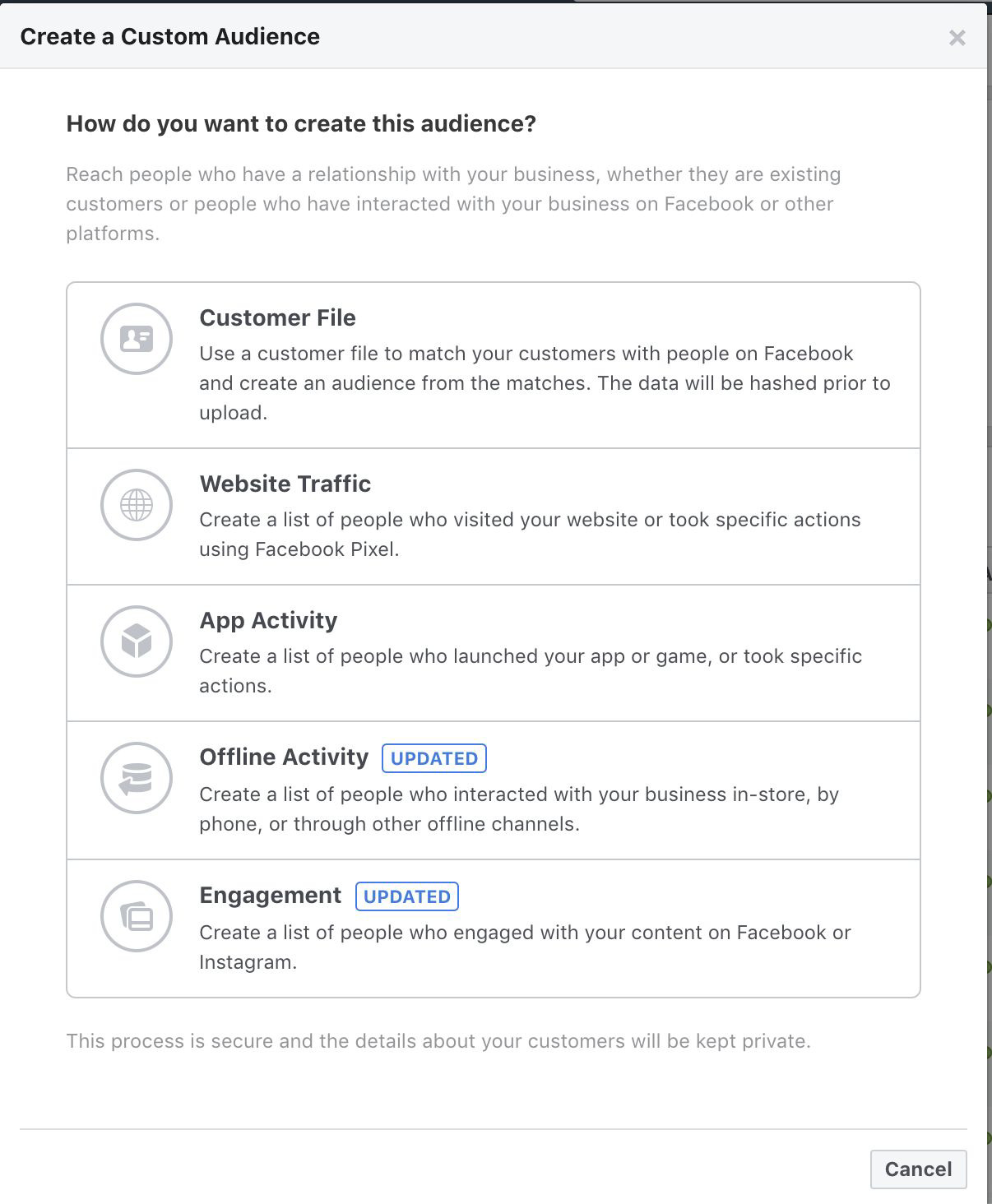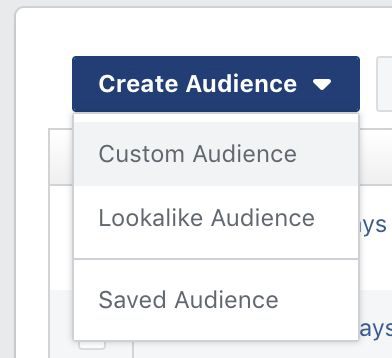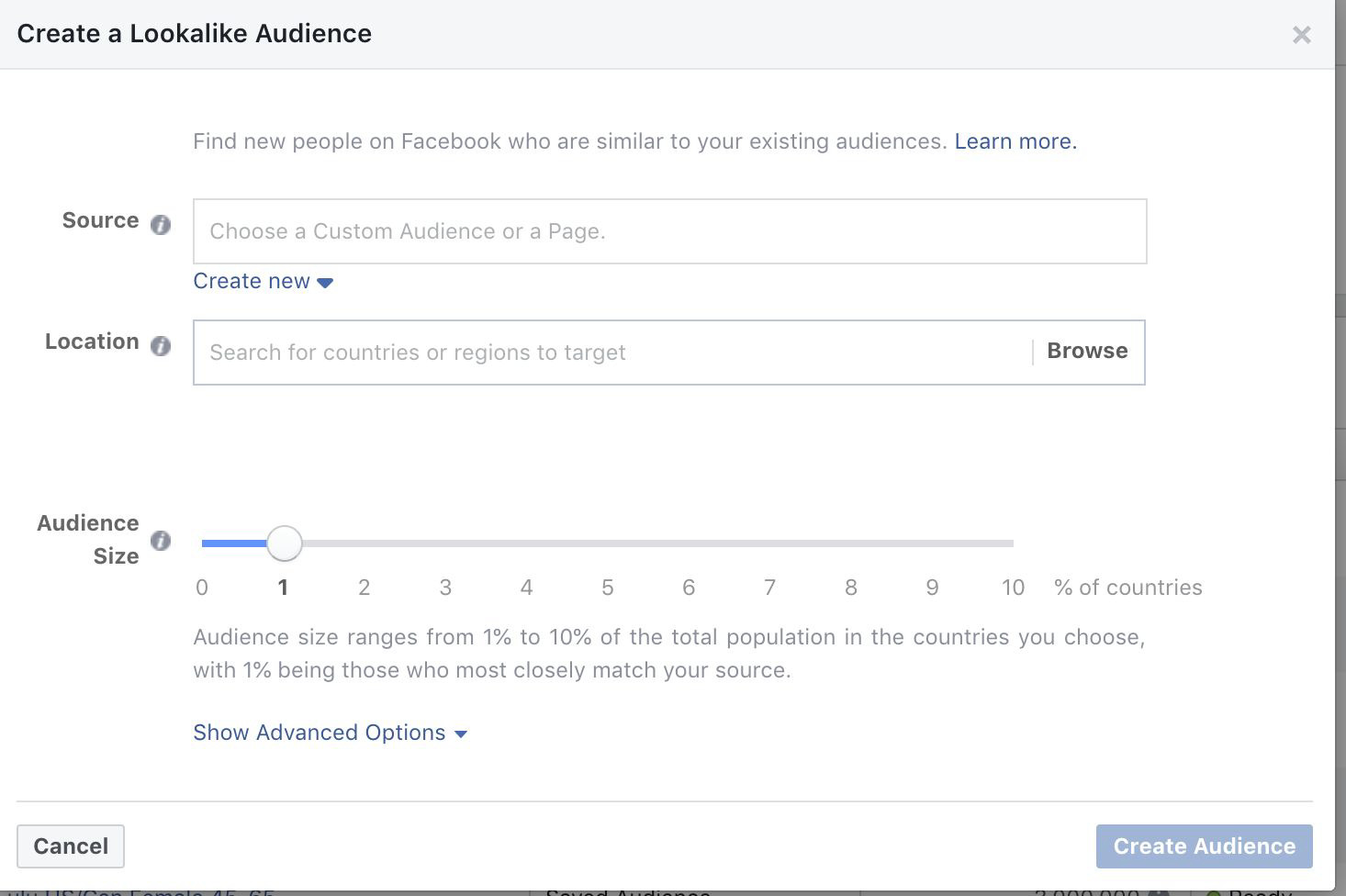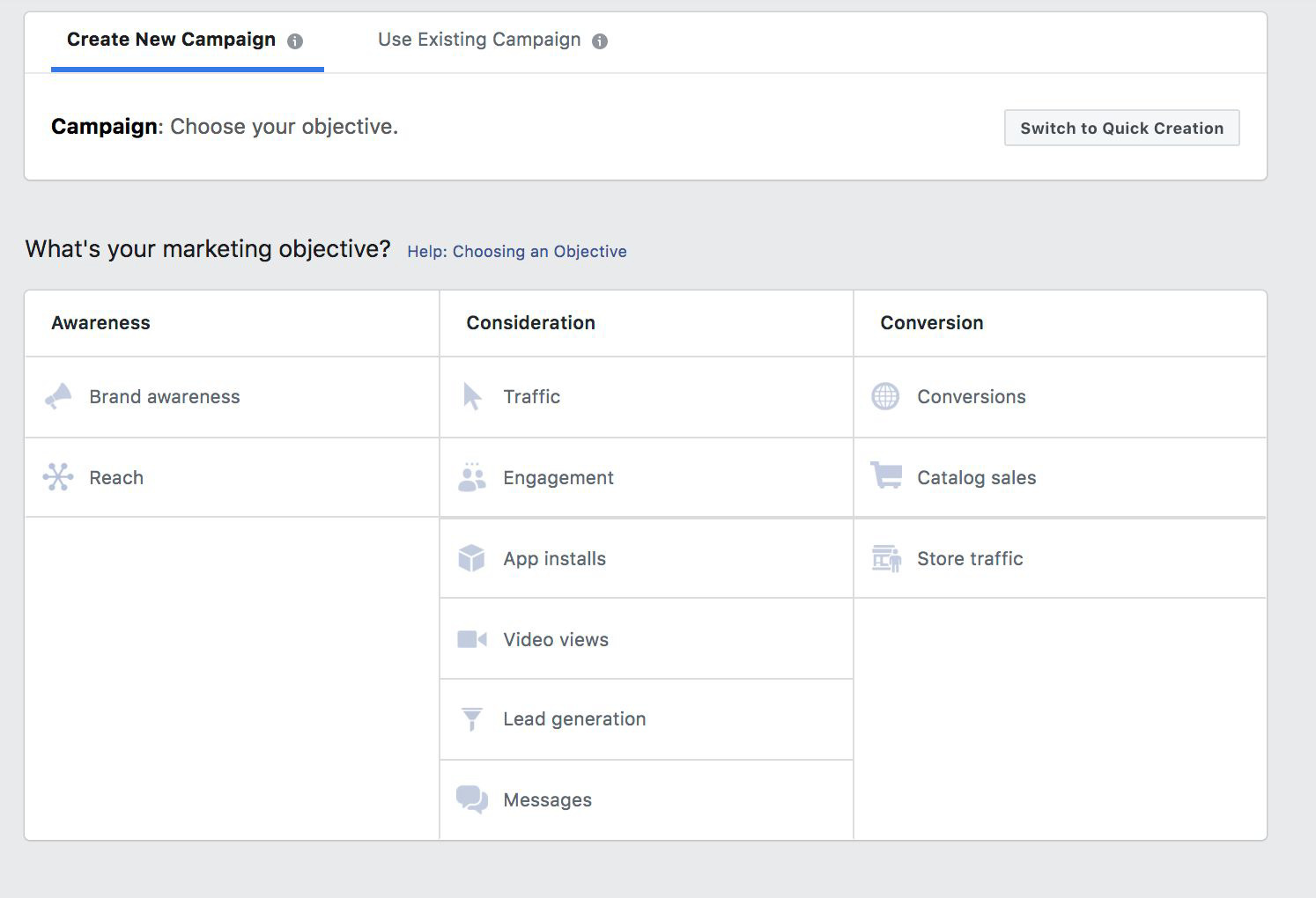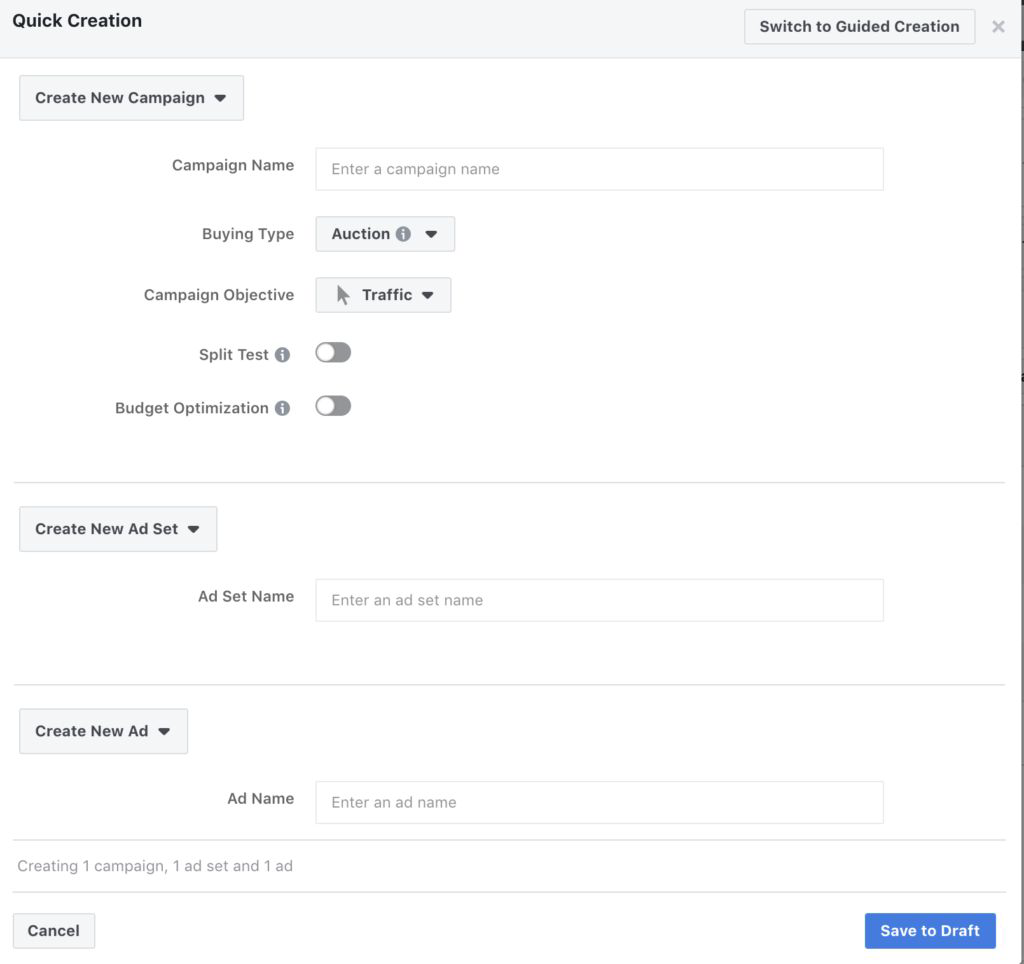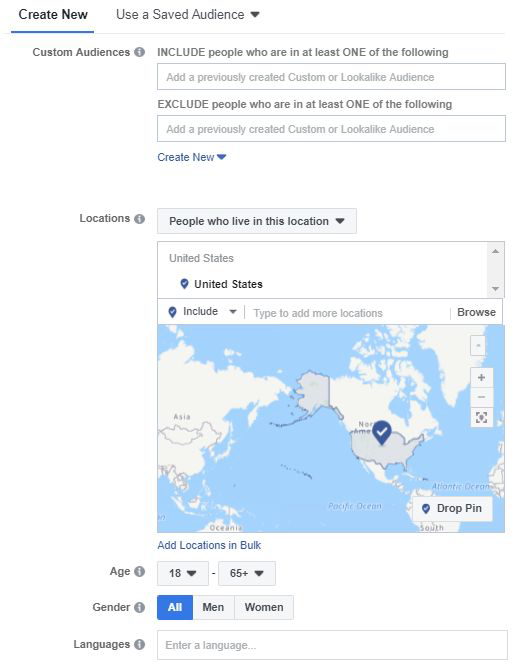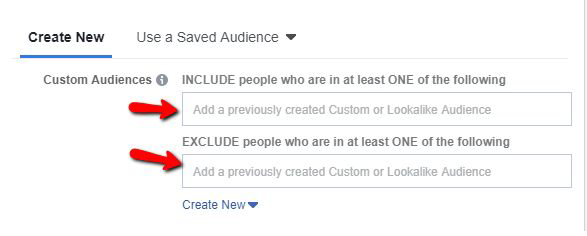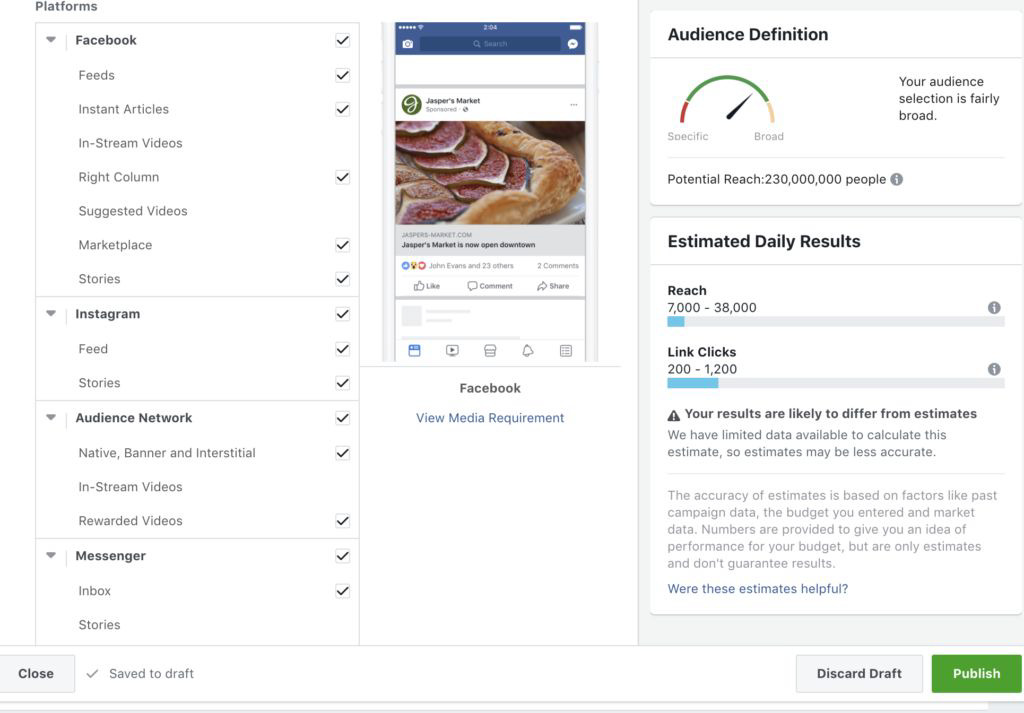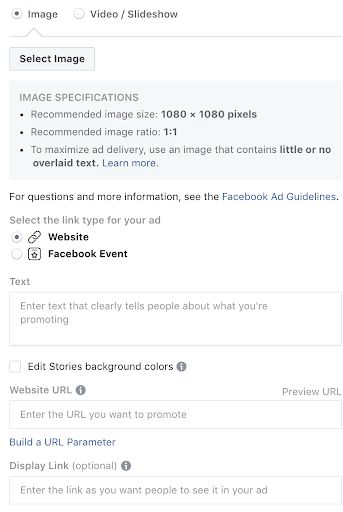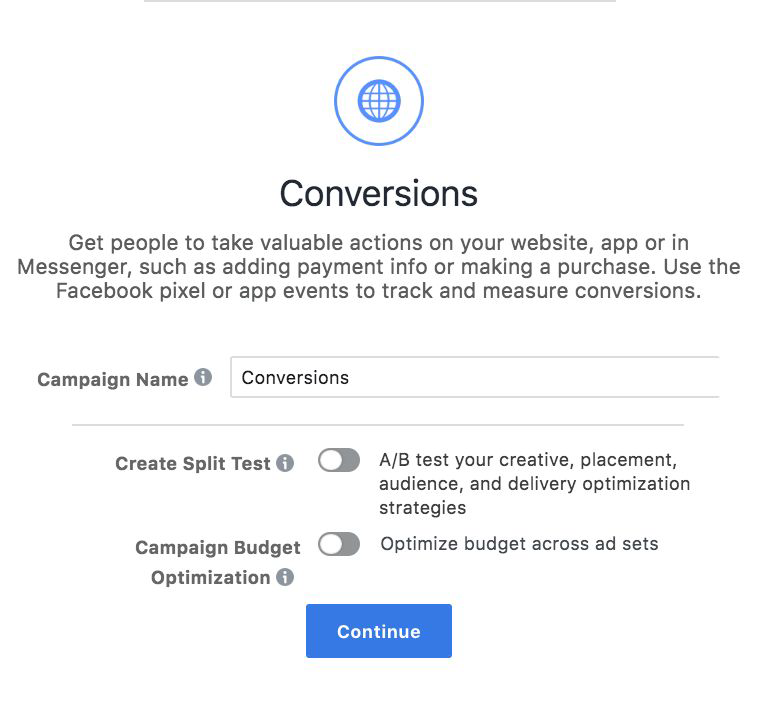Businesses can no longer avoid using paid advertising on Facebook. After all, even when commercial content is excluded, the organic feed is substantial. so having better facebook ad strategy will save your money and time
This means that businesses may want to use Facebook at all because they don’t want to be forced to sell things.Facebook is still the best place for 97 percent of businesses to run paid ads. Because Facebook has a massive user database.
this may be a contributing factor. In addition, Facebook now has more advertising authority than ever before, thanks to its acquisition of Instagram. Your organization could potentially lose a large number of consumers if you decide not to move.
Why Run Paid Ads on Facebook?
We’re going to talk about Paid Ads as it’s an important and potentially extremely lucrative part of your growth strategy, and we’ll go into extensive detail to position you to success with the latest tactics.
Why Paid Ads ?
-
Precise Targeting
You can narrow down exactly who you want to show your ads to. Remember those demographics of your ideal customer that you created?
Facebook allows you to target them. So it’s 20-25-year-old females in London, who like shopping and luxury fashion brands..Facebook will target them. It’s crazy powerful.
-
Large Audience
The online exposure we have at our finger-tips is huge. Buying traffic allows us to get a large audience instantly.
You don’t have to rely on creating content that has to get shared in order for you to get exposure.
The organic (pull) tactics to get millions of eyeballs on your brand is hard… paid ads is one of the few ways to get millions of
people to see your products in a matter of days and weeks.
Rules to Follow When Buying Facebook Ads
Here are some rules and main tips that you need to keep in mind first if you are buying paid traffic…
-
Test Budget
The first $1000 of your ad spend is just to test your ads! You won’t make a return from it! Sucks don’t it?! But… it isn’t a waste. It’s an investment and education.
You are learning from it. If you just spend $100 for example, then you won’t get enough data back to learn what keywords work, which copy, images, videos or targeting, etc.
So you have to go through that ‘Build, Measure, Learn’ cycle so you can find out exactly how your ads should be.
This can take a couple of months or a few thousand dollars before you start seeing a profitable ROI depending on how solid
your offer and marketing are.
-
Sell the Click, Not your Product
The landing pages and sales copy are built to actually ‘sell’ the product or service, the Ad is used to just get the customer to that sales page.
So don’t feel you have to cram in too much information into the ad to sell the product… just think about what you have to do in the ad to get the click!
-
Focus on Maths & Data, Not Just Creative
You might think that ads are all about being creative, and they are… but ultimately, it’s an equation that needs to be solved based on data rather than a cool looking image or logo.
The ‘nicest’ ads don’t always convert the best. It’s about making the maths work so the ROI is positive.
So if you have someone who is good with numbers… those are the people who should manage your ads.
-
Ads Always Need to Be Refreshed
Each one of your ads, no matter how well they perform, will eventually run their course and need to be refreshed. It doesn’t matter how much profit you make from them or how low the cost per click is, it’s the nature of all ads to hit a bell curve.
It can be referred to as banner fatigue. It might be weeks or years for them to run their course, so… you need to be on your game and not get complacent.
You need to always be creating and testing new audiences, new demographics, hooks, offers, copy, images, etc.
This way, when your old ads stop performing, you have ads to take their place.
Seting Up Your Facebook Ad
With those Rules in place, let’s now dive into how to get your Facebook ads set up. If you haven’t got your Facebook ad account set up already and don’t have any campaigns running,
This will you with screenshots to help you get through the technicalities of it.
1) Set Up Your Ad Account
This is a step by step guide so that you’re setting up your ad campaigns in the best way possible to position you to big returns.
But, you’ll need to create a Facebook Business Manager account if you don’t have one already. Go to https://business.facebook.com/ to create an account and connect it to a Facebook page.
Then, you’ll need to create an Ad Account within your Business Manager. Go to Business Settings > Ad Account > Add an Add Account.
It’s all pretty standard processes here to enter your credit card details and business information etc. You add credit card details so Facebook knows that you’ll pay for ads when you run them.
*Note that you’ll only get charged for ads when you spend money on them.
This Business Manager account is where you’ll build and manage your ads, and it’s where you can delegate the management of the ads to an agency, contractor or employee if there is a one
2) Create & Install the Facebook Pixel
You need to install the Facebook pixel on your website. The Facebook Pixel is a short piece of code that is placed in the header of your website and works as an analytics tool to track your website visitors and their actions/events.
It basically measures conversions and essentially spies on your visitors to get to know them in order to gather data to then use to optimize and improve your ad performance to drive more sales.
The pixel is responsible for the success of your Facebook campaign and can massively grow your profits if used correctly, so get it set up!
Note: If you don’t know how to install the Facebook pixel yourself, get your web developer, marketer or anyone with experience to do it for you.
You’ll find somebody on Upwork to do it for you for $10 or so. This is pretty easy to do if you are using a web platform such as Shopify, Squarespace or Clickfunnels, etc. But if in doubt, get help.
3) Adding Pixel Events
If the code is on the site, you can add specific events to track such as ‘Purchase’, ‘Lead’ etc.
You can choose to track the events when the page loads or when an online action occurs. You can also add parameters to your events such as conversion value i.e. if it’s a ‘purchase’ and your product costs $100 then you add this value.
These specific event tracking will really put your pixel to work and create huge value, as your pixel will know exactly who to retarget and what kind of people it should be showing your ads to.
Here are the specific steps to create and install the pixel
Step 1: Create the Pixel
Here’s how you’ll create and add it to your site: In your Facebook Business Manager account
– Click the main menu in your header (top left)
– Click ‘All Tools’
– Under ‘Measure and Report’ tab, click ‘Pixels’
– Click ‘Create a Pixel’ if you don’t have one already
– Name Your Pixel i.e. Your Business Name
– Copy the pixel code displayed and paste it into your website header. This is where you’ll get somebody who knows how to help you. Or, if you are using Shopify or Clickfunnels.
it’s pretty easy and there are lots of youtube videos or instructions on their websites, so it can be done in a couple of minutes.
You can also add it via Google Tag Manager if you have this installed on your site too.
Whichever method of installation you go with, you can check things are installed working by installing the Facebook Pixel Helper extension on Google Chrome to ensure the proper events are firing when you want them to.
Checking it is firing properly is how you will determine your ROAS and make key decisions etc.
4) Creating Audiences
Now we need to build a number of audiences to target. To begin with, should create an audience from your existing data that you have, i.e. your pixel and your email lists so that you can retarget to people already familiar with your business.
Here’s how:
– Go back to the menu and select the audiences option.
Here is where you can upload an email list of your current customers or leads that the Facebook pixel will look at and retarget.
– To create an audience based on an email list, Click Customer File and continue.
– At this point you’ll need to prepare your spreadsheet into a CSV file. Facebook will tell you how. Email is obviously the minimum data you need, but any phone numbers or names, etc will be a bonus.
– Name your new audience that you’ll be able to easily identify later. Could be ‘Past Purchasers’ or something. Maybe add a date range to be specific.
In addition to that static audience, where Facebook will always refer back to that list… you now want to create dynamic audiences that will automatically update based on people who have actually visited your site.
– To do this, go back through the same create audience steps but this time select ‘Website Traffic’
This is where we get really specific… You should create a number of audiences based on their behavior on your site.
Here, you’ll want to create a few different audiences.
For example, you’ll want to create audiences for those who have purchased, who have added to cart, who have viewed a product, and for different date ranges.
So, you can select an audience of ‘Purchasers in the past 30 days’. Or ‘Checkout Abandoners in the past 3 days’. You can get very granular with these – such as targeting those who have viewed certain pages between a certain time frame.
You should go and make a number of these audiences so that you have them to hand whenever you might use them in the future. To start with, set up the following time frames for people who visited your main sales pages:
– 7 days sales page visits
– 14 days sales page visits
– 30 days days sales page visits
– 60 days sales page visits
– 90 days sales page visits
You can do the same for any other page view. Could be ‘general visitors’ to the site. Or ‘Checkout page’ visitors. Etc.
You can also focus on people who watched 50%, 75%, 90% of your videos so you can retarget to those leads who already engaged in your content. Etc.
5) Lookalike Audiences
The lookalike audience is arguably the most powerful aspect of Facebook advertising. Or any advertising for that matter.
Basically what happens is that the Facebook algorithm looks at the profile data of people who visit your site i.e. visit pages, checkout or even engage with your ad etc, or who are on your email list, and they then crawl facebook to find similar Profiles who they then advertise your product to. Sounds kind of creepy, which is why it’s highly effective and popular.
To create a Lookalike Audience:
– go to Create Audience, then select Lookalike Audience:
– Select your audience you want to pull from based on the previous audiences you have just set up, such as lookalikes of your email lists, your customers, your website visitors over 30 days, 90 days etc.
– Choose the country you want to target too.
TIP: We suggest starting off with an audience size of 1%, keep it focused and specific. Don’t give the algorithm too much work to do when finding your ideal customers,
so keep it at 1% to start with, and then scale up the percentage with future tests.
6) Other Audiences
We have mentioned a number of audiences you can create above, here is a list of other audiences to create which can allow you to be really specific with your ads to reduce costs.
As we said, you can create other audiences based on the percentage of your videos they have watched, and how they have interacted with your page.
Some examples include:
- People who have viewed 50% of your video
- People who have viewed 95% of your video
- People who have interacted with any of your pages’ content in the past 365 days
- People who have been to certain pages on your website
- People who have downloaded a certain lead magnet
- People who have visited any page of your website in the past 60 days
- People who have visited key pages on your site but NOT purchased
- People who have purchased your product
- People who are on your email list
- People who have visited only your homepage in the past week
- People who have interacted with an ad of yours in the past 30 days
7) Campaign Structure
Ok, you have set your audiences up. You’re equipped to target your customers. Now you need to set up the campaigns. Organization and structure are key here.
To start:
– Go into ads manager
– Click the green Create Campaign button You’ll see this screen:
Name your campaign, your ad set, and your ad. Don’t over think it though, you can change them later when your campaign becomes more clear.
You can start with:
Campaign: Launch Campaign
Ad Set: General Visitors Retargeting:
Ad Name: Image 1
After this, save it as a draft and go to the ad set section. Click on the edit button to open up your targeting choices:
This is where you set-up your audience selection. You can select any audiences you want to target that you created in the previous steps.
If you are trying to find new customers to put into your funnel, you’ll want to test an ad set that is focusing on some of your lookalike audiences or custom audiences to see which one works best.. but you can also expand on your lookalike or custom audiences you created by adding ‘interests’ to your targeting.
You can target people who are interested in certain facebook pages, who are ‘active shoppers’, or interested in things your target customer might be interested in.
– You can browse through the demographic options on this page:
This is where you use the customer data you put together while spying on your competitors or doing your customer analysis etc.
If your ideal customer is 30-40-year-old women who like to listen to Beyonce, and they work in ‘Marketing’ then you’d input those filters here.
TIP: In addition to Including certain demographics, you also want to exclude them too.
– For example, you are trying to find new customers, you would want to ‘Exclude’ your current customers.
– Next, you’ll select where you want your ads to display. At first, test out Facebook and Instagram feeds only. That’s where you get peoples attention. So unselect other options:
Messenger ads and chatbots are very popular and up and coming tactics, but they are more advanced and specific to be included in this strategy. But… you may want to add those to your plan of action.
In Summery
you’ll see how Facebook is pretty systemized with the setup. Using the tools they give you and the ability to create audiences and target so well makes it easy to get a strong marketing campaign going.
Now it’s a case of using the above structure to then create your ads by adding images, videos, your call to actions and ad copy to the simple ad builder.
The more audiences you test and the more specific you are, the more your ads will be viewed and engaged with and the cheaper your clicks and sales conversions will be!
Here’s what you should do now if you haven’t done so already:
– Create and Install your Facebook Pixel onto your website
– Add custom events such as purchases, lead conversions, etc on your site
– Upload your email list as an audience for leads and customers (if you have it)
– Create custom audiences based on website views for your sales pages, checkout pages, and general visits
– Create custom audiences based on video ad views (50%-75%-90%)
– Create a custom audience based on interest
– Create 1%, 5%, and 10% lookalike audiences based on the above custom audiences (email lists, website visitors, etc)
– Create your first ad campaign, ad set, and ad
Scaling and Optimizing Your Facebook Ads
Facebook Ads aren’t a ‘set it and forget it’ campaign. You need to monitor the metrics of your ads closely so you know what to tweak and change to go to the next level.
Most businesses think if you increase your budget, your CPA and ROAS will just stay the same… it’s not the case. You have to work with Facebook’s ever-changing algorithm.
Monitoring
Facebook’s analytics makes it pretty easy to see what’s working and what isn’t in your campaigns. You have to stick to your budgets and understand how your ads are performing.
Are they getting seen? Are they getting clicked on? Are they getting conversions etc?
Here are the main metrics that you should be measuring in your campaigns and why…
1) Cost Per Result
Each ad you set up will have a goal objective. It can be a conversion, a purchase, a click, etc. You choose. The cost per result metric will show you the average cost of your ad based on the objective “result” that you create.
2) Ad Impressions
This tells you how many times the ad has been viewed. But, it doesn’t tell you how many people actually noticed your ad. It basically means that it was loaded onto a page.
3) Ad Frequency
Remember we mentioned that your ads will have a shelf life and you should refresh them? This metric is important in that it will tell you how many times on average that a viewer has seen your ad.
If the number is high it means that a person is looking at your ad more than once and could be interested. However, if it is high, but your conversions are low, then it can be a sign that the frequency of your ad is repetitive and stale.
4) Ad Clicks
As we said previously, the goal of your ads is to get people to click on them. So Ad clicks is an important metric because it shows actual intent and interest in your offer.
If you have low ad clicks, you might want to change your message and images or video. If your ad clicks are high but your sales page conversions are low, then you might need to optimize your landing page.
5) Click-Through Rates
The click-through rates will show you the percentage of people who click your ads in comparison to all of the people who saw your ads. This metric is shown in the ‘campaign view’ within your ads manager.
If you have a high click-through rate you’ll know that your ad copy and target audience is on point.
6) Cost-Per-Click/Cost-Per-Impression
The cost-per-click metric shows how much you are paying whenever your ad is clicked on. Cost-per-impression metric shows how much you are paying per 1,000 views of your Facebook ad.
These metrics are straightforward but should be monitored in order to stick to your budget. You can set up your ads to be charged based on CPC or CPM, and you can test which is the most cost-efficient for your campaigns.
7) Conversion Rates
One of the most important metrics, the conversion rate tells you what percentage of clicking customers go on to purchase or achieve your objective.
8) Cost-Per-Conversion
Arguably the most important metric… The cost-per-conversion metric tells you how much you have to spend for a sale. This is the reason you spending money on paid ads and will help you figure out if it is effective or not.
9) ROAS – Return on Ad Spend
To go one further, if you can place a value amount on your purchase event, Facebook will automatically take the cost per conversion and the revenue generated to calculate your return on ad spend.
This is the fun metric where you can see you that if you put $1 in… you get $X out in return.
Facebook Scaling

Once you get to that point you’ll naturally want to scale your budget to make more profit.
But, if you want to scale your results, you need to scale your tactics and put some strong scaling methods into your campaigns.
It isn’t as easy as just ‘increasing your budget’, and this is where people lose money and can’t scale their low CPA’s.
So, here are some of the key techniques that will take your campaigns to the next level…
1) Retargeting
This is the obvious one. The less ‘underground’ tactic so to say, BUT, people still do it wrong or limit their potential. There are actually a number of retargeting methods to scale the strategy to increase engagement, leads, and sales.
Retargeting is the glue that holds everything together and takes the user on a journey that builds a relationship with you and your brand. It can lift conversion rates by +20% or even higher.
So you’ll need to utilize retargeting to capture leads that get away and sales that didn’t close.
This is where you are going to put your Facebook pixel to use and bring into play all of the audiences you that previously set up, so you can basically create a Facebook Ad funnel.
You should segment your audiences based on their actions and then provide an ad unique to where they are in the funnel.
For example, if a customer views a product page, then they should be retargeted with a reminder of that product and that they should “Finish their checkout” etc.
If you don’t use these retargeting tactics, you’ll miss out on a huge amount of customers who were previously engaged and would never have come back to your site had it not been for your retargeting.
Use your audiences to create ad sets that retarget to:
– Check out page visitors (Abandoned Carts)
– Specific Product page visitors
– General Website visitors
– People who viewed 50%, 75%, and 90% of your video ads (build ad sets for each)
These are all strong retargeting methods that put your products back in front of customers who have previously engaged. You’ve already made a connection with them. So… just like with the Email sequences,
you need to keep building the trust with them, keep reminding them of your value and eventually they will make a purchase. 7th time is the charm in sales remember!
Another tip is to engage your previous customers by retargeting to them based on the email list you uploaded to Facebook. Remind them of new products or for them to stock up on supplies… or even send a holiday gift to their friends etc as a way to add even more profit to your campaigns.
For each audience… create an ad that will resonate with where they are at in the funnel. So if they abandoned your checkout, show them the product they abandoned as a reminder. Or show them some testimonials in case they needed some additional reassurances.
If they are just general visitors, your ad should tell them more about the value and benefits of your product.
2) Increase The Budget Of Your Successful Ads
Sounds simple and obvious, but increase the budget for the ads that are performing best. If you have high converting ads and low conversion costs compared to other ads and ad sets then let the better performing ad grow rather than changing it.
3) Duplicate Ads to Additional Audiences
This is similar to the above point in that if you see an ad performing well in an ad set, you should duplicate it and add it to other ad sets or campaigns that target a different audience.
There’s no guarantee that it will perform the same, as all audiences respond differently to ads, but you should put it in the game and see if it works. If the audiences aren’t too dissimilar, then you have a chance of it being profitable.
4) Ad Creative Optimization
This can be a real time-saver in optimizing your ad creative. Facebook’s Dynamic Creative Optimisation (DCO) feature basically allows you to put in 10 different images, 10 different texts, 10 different headlines, and 10 different descriptions.
it will automatically mix and match the creative to show to sub-audiences with your target audiences to test which mix works best.
The drawback of DCO is that you won’t know exactly which mix is working as you just leave it to Facebook, but clients and multiple businesses have seen profits can soar by putting this into play, so try it out!
5) New Audience Expansions
As we pointed out at the beginning of this section, all ads will run their course and hit a bell curve. So you need to always be exploring new audiences to expand to. Don’t get discouraged by this as ultimately it is a sign your brand is growing.
You can have Facebook expand its’s search into people outside of your target audience that it feels will also convert for you which you can try.
But ultimately, this is a case of utilizing the different lookalike audiences that you made based on website behavior, ad/video engagement, and even new interest-based demographic targeting, etc.
These are the standard methods of Facebook management. They will set you apart from most other businesses who might neglect the details of a Facebook campaign.
This should serve as a blueprint for you to be confident in setting up, managing, and scaling your campaigns, OR… it can serve as a guide so you know your Facebook Ads Manager is on top of their game and covering bases.
There is a lot to do. If you want to see results you should be investing a number of hours each week on figuring out what’s working. If you don’t have the time or the understanding but you want the results, then you should invest in hiring a good Facebook ads manager to make you profitable.
Facebook Ad Strategy – Basics
The above foundations for setting up and managing your Facebook Ads will give you every chance of really growing your business if you have a good product.
But of course, your actual ad creative is essential in capturing the attention, clicks, and conversions.
You need to invest in focusing directly on your ads and how you’ve designed them. From the ad copy, the images and videos, and call to actions…
Here are some main tips:
1) Ramping Up Your Ad Copy
Remember that Facebook is all about discovery. People aren’t looking for your ad and they have a lot of distractions on their feed… so you need amazing ad copy to stand out from competitors and capture their attention.
You need a solid ad text, an attention-grabbing headline, and a strong link description.
2) Ad Text
This is the text that appears above the visual part of the ad. (or below your Instagram ad).
This should usually be about 20 words and give an overall summary of the value and offer of your product. But, in some cases, you can also write much longer sales copy in this area. So you can test which works for you.
3) Headline
This appears directly under your ad image or video. Needs to be short, clear and concise, punchy statement, that grabs attention.
4) Link description
This appears directly below the headline. This can be 12-15 words in length and will expand on your headline to support it and give it an extra punch. Depending on the length of your headline and the type of ad, the description may tail off with ellipsis
As you enter your copy into the fields above when setting up your ads, you’ll notice that not all of the information gets displayed when you view the previews of the ad.
That’s because of the different formatting for the different platforms. Instagram or Facebook stories, for example, won’t show descriptions so you might want to set up specific ‘Instagram Stories’ campaigns to ensure you’re not wasting money on formatting and creative that isn’t optimized for the best experience and impact.
5) Include a Call-to-Action
Every ad should have a call to action. You run the ads to generate engagement and ultimately send your customer down your sales funnel.
So use the call to action buttons that are relevant to your ad, such as: “Learn More,” “Click Here,” “Subscribe,” “Sign Up,” or, “Download”. No call to action, no profit.
6) Optimize Your Images/Ad Format
Your ad copy will capture attention, but the visitor won’t see it until they are stopped by a cool image first. So make your images grab their attention and set yourself apart from everything else on their feed so you get more clicks!
You can use Facebook’s different ad formats to create, image carousels, square images, landscape images, etc.
Your images might have a call to action, they might have a graphic or might just be a photograph. Whatever it is, you need to optimize the quality and create intrigue. And of course, you need to test!
You might sometimes be surprised at which image performs best.
7) Use Video Ads!
Using video in your ad strategy can be one of the most effective ways to grab the attention of an audience.
Facebook wants to promote videos! And, people want to watch things. So play into Facebook’s hands. Your videos can be of your product, they can be a series of images of your product, they can be a selfie of you promoting the product, or you can go full-on production style and create a commercial (if you have the budget).
You can use Facebook’s built-in video editor to quickly make a 5-15 second clip with ease. Or you can find somebody on Upwork or Fiverr that can create something for you at low cost.
Facebook Ad Strategy – Advance
Here are some more advanced tactics to take things up a level and get the most out of your campaigns…
1) Split Testing Ad Sets and Ad Copy
you have to figure out what version of a landing page or ad works best so you compare two or more versions. This is split testing, or A/B testing as otherwise referred to.
You should run split tests to test multiple campaigns to the same audience, and see whether ad ‘A’ is better than ad ‘B’.
Facebook has a Split Test feature where it will run two ads side by side for a short period of time before determining a winner. You can set this up as you are creating a campaign by selecting ‘create split test’
But you can also set this up yourself by creating two campaigns. This will mean you need a big enough budget so you can gather data for both campaigns, but it’s a great way to figure out which ad performs best before switching off the worst one.
Make sure you are only testing one variable. So if it is just the image or video that you want to test, keep the title, description, call to action and the target audience the same, etc.
If you wanted to take your a/b testing to another level, then you could create variables within each variable in multiple campaigns. You could have 5 different videos, 5 different ad copy versions, and create campaigns to test each mix and match of each.
This would allow you to get super specific on what works best, but it is a lot to manage, monitor and organize so you’d need to be on top of your Facebook game.
This is pretty much the manual method of using Facebook’s Creative feature that we discussed above, which is easier to do, but you wouldn’t see exactly which ad works best.
If you find Facebook’s Ad Manager a little confusing then you could use software such as AdEspresso which can be a little easier to run test and manage the account.
Why Split Test ?
We can’t stress enough how important it is to test everything you do in marketing. Especially when you are directly paying for the ads. You want to know exactly what is going to give you a bigger return for every dollar spent, so perform these small tests in order to save you a lot of money in running ads that don’t work.
It does take time and effort to set up, and a lot of patience and persistence in learning where the sweet spot is for your audience is. Then even when you get things right, you have to always innovate and optimize to ensure results are maintained or improved.
The difference between most online businesses is that many will do the basic levels of account management, but it’s the ones who persist and continuously try new methods to scale that succeed.
Once you get this right, your business and profits will grow!
2) Manual Bidding
Another way to increase and scale profits is Manual bidding.
Facebook usually defaults to an automatic bidding strategy where the algorithm does the hard work for you by picking the best bids based on your campaign objective.
But, if you want to handle things yourself you can choose the manual bid setting and set a specific budget for what you want to pay per conversion. This is an advanced method that lets you set up within the Ad Set setting
The goal is to hope that you can manually perform better than Facebook’s default bid optimization. So if Facebook’s default automatic bidding is getting you a $10 conversion rate, you want to play around with your manual bids and set it at $5 to see if you can be more efficient than Facebook’s algorithm.
Then, based on those results, you might increase your bid to $20 and find that your final conversion cost is lower than the automatic conversion cost you had.
You can edit your bids on an hourly, daily or weekly basis but you need to be on top of this because you are taking the responsibility to do the work that Facebook would otherwise do. Check in every hour or day when you first set it up as you
could lose a lot of money if you miss a beat.
One thing that often happens with Manual Bidding is that your daily budget doesn’t get spent and so your ads don’t get seen. This can be because your bid is way too low to get a sale.
You can fix this by ensuring your budget is 5x-10x of your bid cap. This might be a big budget which is why this is an advanced strategy.
Then, you want to slowly increase your budget to start the algorithm…
Check in every couple of hours to see if your ads are getting impressions. If they aren’t, then you can increase your bid cap by $2. Then, check in another couple of hours to see if your ads are getting served and increase by $2 again if they aren’t.
Don’t do this more than 5x a day and of course, once the budget starts getting spent, leave it there.
Your budget won’t always get spent in a day, so if after a few days or a week you have increased your bid to a that still isn’t getting spent or getting any sales… stop the campaigns and revert back to your usual automatic strategies.
Sometimes this strategy can be a great way to get more out of your campaigns or to get your campaigns back on track, but sometimes they won’t work. It’s just how the game is.
Remember, if you don’t test and try new things, you won’t know how much success you can have with it. So test test test!
3) Rapid Scaling
If you have a huge budget and are really ready to risk things, then you can use the same manual strategy above but increase your bid budget by $10 every couple of hours instead of $2.
The idea is that you can quickly get your campaign up and running and bypass the learning and waiting process to get your ads firing and converting in the same day.
NOTE: This is a very risky strategy and we don’t advise it unless you are a Facebook Master and are willing to spend and risk a lot of money.
4) Super Lookalike Audiences
If you already have a customer base you can get even more specific with the lookalike audiences you can create to target the most profitable customers.
If you filter your database of your highest paying customers, based on Lifetime Value or Average Order Value… upload that list as a lookalike audience and the Facebook pixel will look for customers who will be just as loyal and high spending customers.
Remember the cost of learning in these cases will see your campaigns enter a ‘Learning Phase’ as the pixel get’s used to finding what you want.
This will increase CPA’s, but after the pixels do their learning are equipped with new specific knowledge of your ideal customer, it will find your customers more easily (and cheaply) and those customers should increase your ROAS.
5) Resurface old ads
Facebook is massively rewarding social proof right now because of their need to clean up their platform and it’s integrity. So ads with higher engagement will be pushed further by facebooks algorithm.
If you have old ads live that had high engagement, put them live again to see how they perform. You might see their CPA’s decrease!
Similarly, take into account the engagement and interaction of your conversion ads, if they have high conversion costs but have also have high engagement… still leave them running and give them time as the social proof can build up and improve results.
6) Use long-form descriptions
You can use your ad to qualify and sell people before they click on the ad… this might mean higher click costs, but higher conversion rates.
This allows you to teach your Facebook pixel to be super specific with the targeting as you know that whoever is engaging with your ad after being given so much information, are much warmer and qualified leads to spend money on, and more likely to convert through retargeting.
Check more Articles:
Top 3 Advertising Platforms Alternative to Facebook in 2022
How To Use YouTube Ads For Amazon FBA
How to Analyze Competitors Ad Campaigns
10 Best Digital Marketing Courses 2021 [ Updated ]
Conclusion
As a result of the numerous possible factors, it is essential to have an efficient Facebook Ad plan in place before beginning on any kind of campaign. Even though it’s a time-consuming process, you don’t want to skip on it. If you do, you run the risk of getting results that fall short of the high expectations you had for the campaign.
Consider Following a Course ?
With Lifetime Access ?
We have been the number 1# platform for delivering most demanding course. Becoming Lifetime Member , You will receive all the Premium content For FREE

Consider Following a Course ? With Lifetime Access ?
We have been the number 1# platform for delivering most demanding course. Becoming Lifetime Member , You will receive all the Premium content For FREE

